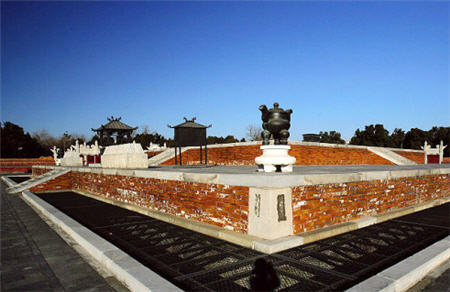

Altar is called 'tan' in Chinese, which is an place where ancient rulers used to offer sacrifices to Heaven or the gods by emperors, and architecturally it refers to a special type of terrace-like building. Several great ancient altars are located in Beijing, mostly dating from the Ming (1368-1644) and Qing (1644-1911) dynasties.
Before Ming Dynasty, the ceremony of worshipping God of Heaven and God of Earth were both carried out at the Temple of Heaven. This practice had come to the end in year 1530 when a new rule that sacrifices should be done at different places which located at the four compass directions with the Forbidden City. As a result of that new rule, construction for other temples had begun. Temple of Earth was built as the north of the Forbidden City while Temple of Heaven is located at the south of Forbidden City. Temple of Sun and Temple of Moon are situated at east and west side of the palace.
Here are five altars in Beijing:
Temple of Heaven (Tiantan)
Temple of Earth (Ditan)
Temple of Moon, also called Altar to the Moon (Yuetan)
Temple of Sun, also called Altar to the Sun (Ritan)
Temple of Agriculture, also called Altar of Agriculture (Xiannongtan)
The most famous altar in China is the Circular Mound Altar (Huanqiutan in Chinese) in the Temple of Heaven. Built in 1530, the all-marble terrace is 5.17 meters high and consists of three tiers, respectively 30, 40 and 70 meters across. The terrace is circular, in keeping with the ancient Chinese belief that Heaven was round. During the Ming and Qing Dynasties, the emperors would offer sacrifices to Heaven on the day of the Winter Solstice every year. Sacrificial animals and other offerings were burned here to ensure good harvests.
The layout of the Temple of Earth is also totally in accordance this traditional belief – 'Heaven is round and the earth is square'. The altar in the temple is a square, two-storied building enclosed by a square ditch. Hence, originally it was called Fangze Altar (Fangze meaning 'square ditch' in Chinese).
Copyright ©1999-2018
Chinanews.com. All rights reserved.
Reproduction in whole or in part without permission is prohibited.